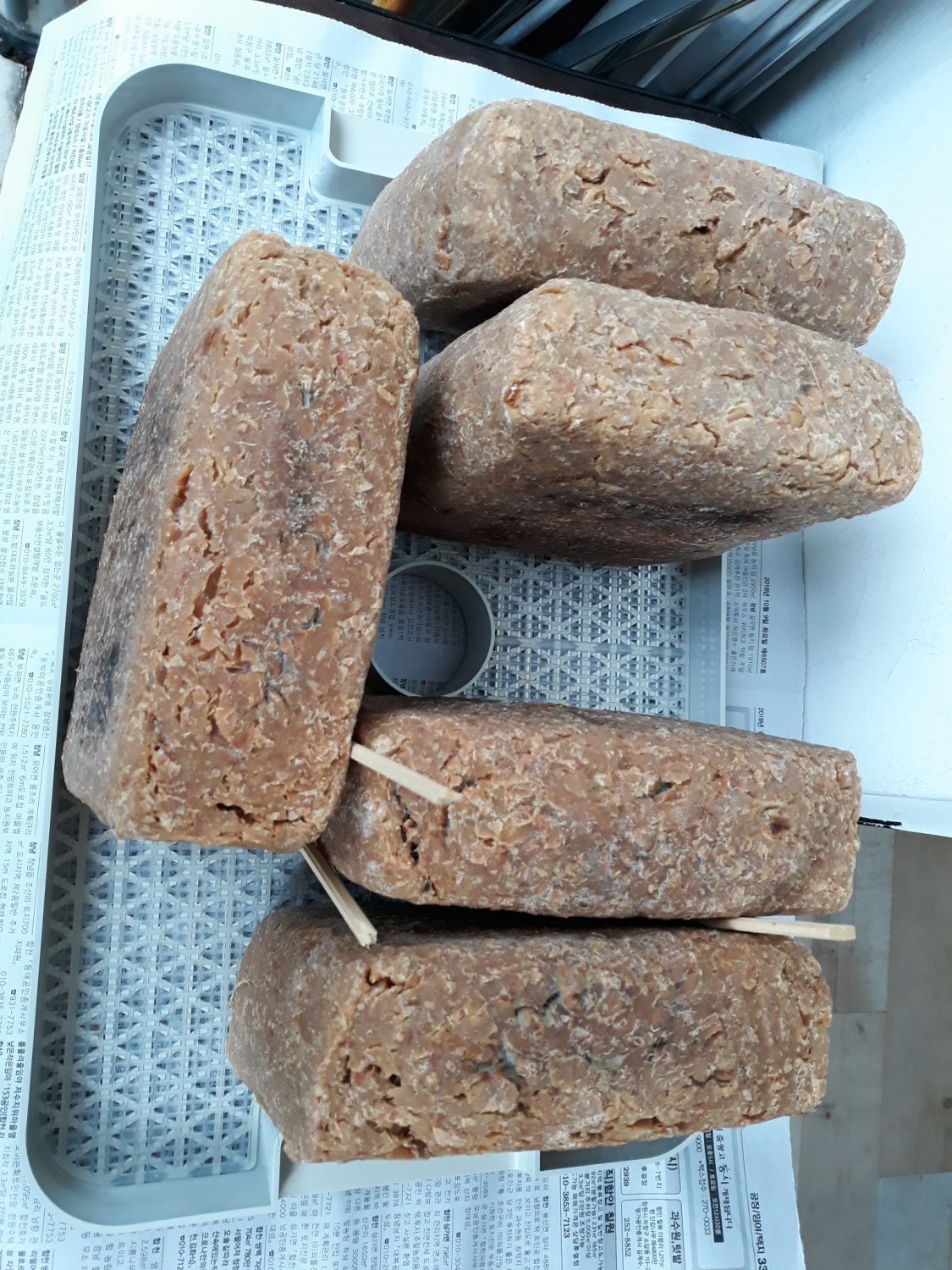Making Traditional Soy Sauce (Guk-ganjang) in the First Lunar Month: The Aroma of Freshly Brewed Sauce at Home!
The Secret to Delicious Homemade Soy Sauce After the Holidays

After enjoying the Lunar New Year festivities, elevate your cooking with the rich flavor of freshly made traditional soy sauce! Making it in the first lunar month guarantees a high success rate and the best taste. If fermenting your own meju (fermented soybean block) is too challenging, you can still achieve a deep and robust flavor at home using store-bought meju. Make your kitchen even more special with this recipe.
Main Ingredients- 8kg Meju (store-bought)
- 1 x 25L capacity earthenware jar
Brine and Other Ingredients- 3kg Coarse Sea Salt
- 10 bottles x 2L Bottled Water (Total 20L)
- 3 Dried Chili Peppers
- 3 Dried Jujubes (Dates)
- 1-2 pieces of Heated Charcoal (approx. 5cm each)
- 3kg Coarse Sea Salt
- 10 bottles x 2L Bottled Water (Total 20L)
- 3 Dried Chili Peppers
- 3 Dried Jujubes (Dates)
- 1-2 pieces of Heated Charcoal (approx. 5cm each)
Cooking Instructions
Step 1
First, prepare 8kg of store-bought meju, which you can find at places like Nonghyup Hanaro Mart. Gently brush off any mold or impurities from the surface of the meju with a dry brush. Then, dry it thoroughly in the sun for 2-3 days in a well-ventilated area. Drying the meju will contribute to a deeper and cleaner flavor in the soy sauce.

Step 2
Now, let’s make the brine, the foundation of your soy sauce. Dissolve 3kg of coarse sea salt in 20L of bottled water, stirring until the salt is completely dissolved. The ideal salinity is around 15%. You can test this by floating a fresh egg; if it floats so that a 500-won coin-sized portion is visible above the water, the salinity is correct. Adjusting the saltiness is crucial for the taste and preservation of the soy sauce.

Step 3
Carefully place the dried meju into a clean 25L earthenware jar. Pour the prepared brine over the meju, ensuring it is submerged. Finally, add 1-2 pieces of charcoal that have been heated in the fire into the jar. You’ll hear a ‘hissing’ sound as the charcoal absorbs impurities and unwanted bacteria, helping to create a cleaner and more flavorful soy sauce. Add the dried chili peppers and jujubes at this stage to enhance the aroma and taste.
Step 4
Cover the jar with a lid and let it ferment for three days. Afterwards, on days with clear, sunny weather and no fine dust, open the lid to let it bask in the sunlight. Sunlight helps inhibit the growth of harmful mold and promotes the activity of beneficial microorganisms, deepening the soy sauce’s flavor. Repeat this sun-drying process every few days.
Step 5
After approximately 80 days, you can remove the meju blocks from the jar to reveal delicious homemade doenjang (soybean paste). The remaining salty liquid is your wonderfully rich homemade soy sauce! Get ready to savor its clear and deep flavor.
Step 6
(Additional Explanation) White mold on the surface of the soy sauce is actually beneficial mold, so there’s no need to worry. It’s a sign of good fermentation! However, if you notice any blue or black mold, carefully skim it off. For safety, it’s best to boil the soy sauce thoroughly until it vigorously bubbles, then let it cool before storing.
Step 7
(Additional Explanation) You can make delicious doenjang with the removed meju. To age doenjang in a jar, pack it down firmly. You can cover the surface with a plastic bag filled with a little salt to prevent unwanted mold and ensure a clean fermentation. If your doenjang turns out too salty, you can adjust the taste by mixing in 1 cup of mashed, boiled soybeans into 5 cups of doenjang. Store the adjusted doenjang in the refrigerator for use.
Step 8
You can succeed in making your own traditional soy sauce! Follow this recipe to create your unique homemade soy sauce. You can do it! ♡



